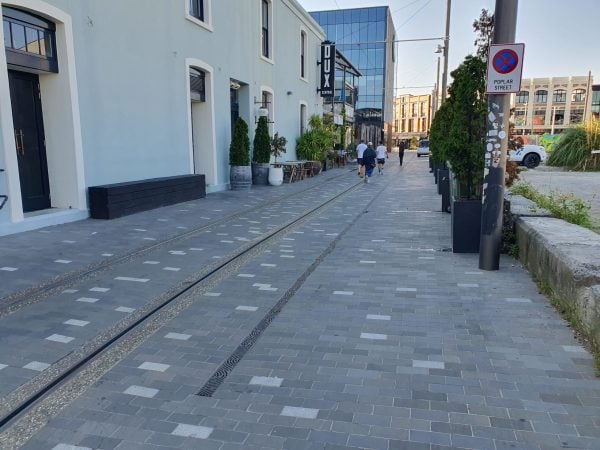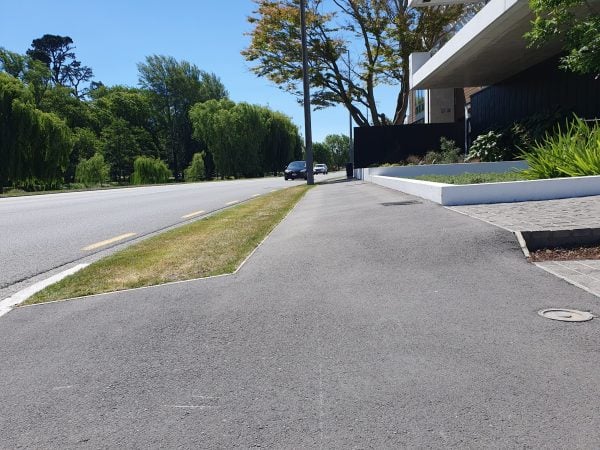Normally, I am one of those people who doesn’t stop – cycling, tramping and climbing whenever I can. However, due to an injury in 2023, I have spent around 5 months unable to walk, cycle or drive. Trying to get around Christchurch on crutches or a knee scooter opened my eyes to how difficult it is to get anywhere with a mobility impairment. As a Transport and GIS Specialist, I spend a lot of my time considering how people move around, and while in my professional role I look to consider how we can make our town and cities accessible, it’s another thing to actually live the challenges on a daily basis.
After my experience navigating with a mobility impairment, I thought it would be great to share some of the things I now think about when designing pedestrian networks to make sure they work for everyone.
Surfaces
Tiled footpaths might look nicer than concrete or asphalt, but they can get very slippery when it rains. On a wet morning, I had both crutches slip out unexpectedly mid-swing and caught myself on my injured leg. Luckily I didn’t do any extra damage, but this could have ended pretty badly if I didn’t have the protection of a moonboot. After that experience, I felt safer hobbling up the road to avoid the slippery tiles on the footpath.

Obstacles
When in Methven, I came across a footpath with a row of trees straight down the middle. There was barely enough space for me to get past on my scooter. The tree roots were also breaking up the footpath making it bumpy and difficult to roll over. In this location, with open space on one side, the trees or footpath could have been moved off to the side to avoid these issues.
Slopes
Even a small sideways slope on a footpath can be difficult to navigate. A knee scooter tends to turn downhill, and I expect wheelchairs would do the same. This was most noticeable crossing driveways, where the sudden change in slope would turn me towards the road. I got used to this with practice, but nice flat surfaces are much easier to travel over. The Pedestrian Network Guidance specifies a maximum crossfall of 2% – across a 1.5m wide footpath, the height difference should be no more than 3cm.

Crossings
Getting my knee scooter on and off the footpath to cross roads was much harder than I expected. I thought a standard drop kerb would be enough that I could roll my scooter over. It does work where they are well designed with a smooth transition, but many around my area have a big enough bump to bring the scooter to a stop. I would end up balancing on one leg while I lifted the scooter on or off the footpath.

While I was injured, I became very reliant on friends and family to drive me around, because even travelling 700m to my closest bus stop on the scooter or crutches was too hard. My injury was only temporary, but some people have to face these challenges every time they leave the house. We should do our best to make pedestrian networks work for them, so they can get around independently.
If you are designing, maintaining or building any of these environments for our communities – our families, neighbours, colleagues and team mates – please give a thought to the above and how we can all do better.
.png?width=556&height=152&name=Abley_MasterLogo-Website%20(1).png)


